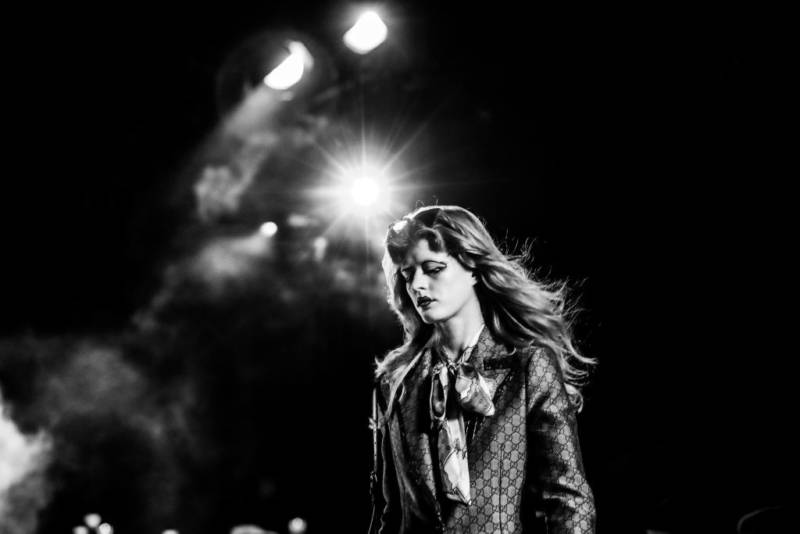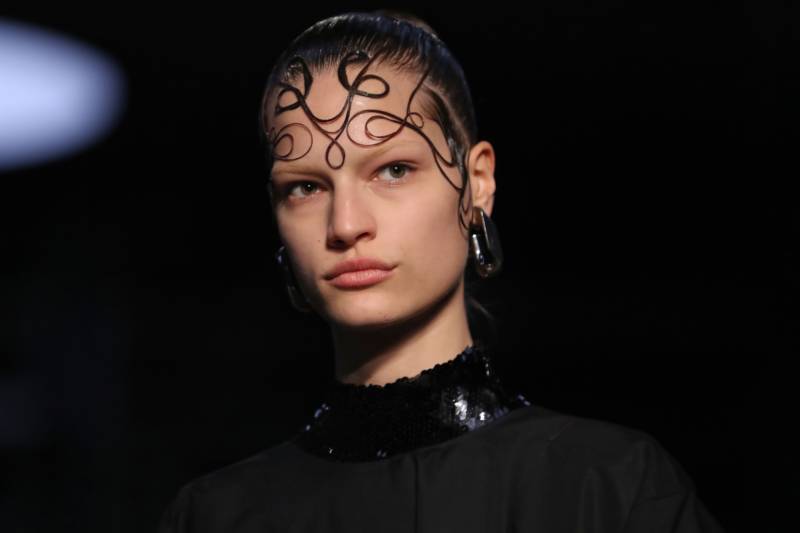Last month, Burberry apologized for sending a sweater down the runway at London Fashion Week that featured a hoodie drawstring that culminated in a noose. Liz Kennedy, a model who walked in the show, called out the brand on Twitter for glamorizing suicide and lynchings.
Racist Imagery Sneaking Into Fashion is No Accident

CEO Marco Gobbetti said Burberry was "deeply sorry for the distress" caused, and that "the design was inspired by the marine theme that ran throughout the collection." It was a confusing statement given the fact that it's difficult to find anything particularly nautical in the show. (When did people start wearing fur coats on boats?)
As Kennedy pointed out, not only did the noose evoke suicide imagery, it was impossible not to think of lynching, especially given the fact that most of the models' hair in the show had been twisted into over-the-top laid edges, a style traditionally associated with people of color.

Burberry's offending look came hot on the heels of Gucci's controversial "blackface" sweater:
As well as Katy Perry's ill-advised shoe designs that she said were "envisioned as a nod to modern art and surrealism" but ended up causing offense:
And last year, Prada used "Sambo"-adjacent imagery in both their accessories and their window displays:
So what the hell is going on here? Global News recently reported: "Experts say many of these fashion companies live in a sort of bubble and lack the diversity in their staff that could vet their fashions. They also blame the increasing pressures facing the industry to push products from the design board to the stores and online in weeks rather than months without taking time to thoroughly review products."
That feels like a major cop-out, given the close similarities in most of the offending designs, as well as the almost simultaneous timing of their releases. The last time designs this racially controversial emerged was a full seven years ago when Jeremy Scott designed an Adidas sneaker with jumpsuit-orange, slave-like shackles attached to the ankles.

Back then, Scott's design was an egregious one-off that never made it to mass production. But in the last six months, racist imagery in fashion is looking less like an accident or an oversight, and more like a full-blown, designer-sanctioned trend. It's impossible to know the roots of the inspiration behind the designs, but it seems deeply unlikely that the fashion world is as oblivious as it claims to be when it comes to the weight attached to this kind of imagery.
After all, it's not like issues around blackface haven't been front and center recently. Last year, Megyn Kelly lost her lucrative job at NBC after defending blackface. Virginia's governor, Ralph Northam, and the state's Attorney General, Mark Herring, have both dealt with recent blackface-related controversies, stemming back to the '80s. The same goes for Florida's Secretary of State, Michael Ertel, and Republican state representative, Anthony Sabatini.
There are currently so many politicians dealing with blackface controversies that SNL went to the trouble of writing a skit about it:
One might argue that the offending fashion houses have their roots in Europe and therefore have little interest in or understanding of both American politics and our country's history with slavery. But as long as Prada, Gucci and Burberry have offices and multiple stores on U.S. shores, there's really no excuse.
Racism is certainly not an America-specific problem. Though the number of hate crimes being reported here has been rising steadily since 2015 (with nearly 60 percent of those occurring "because of bias against race, ethnicity or ancestry bias"), the same can be said of Italy (home of Prada and Gucci) and England (Burberry's home base). Both countries saw the number of reported race-related hate crimes literally double between 2012 and 2017.
An apologist might try and make the argument that these designers are merely reflecting the fraught times we live in, holding a mirror up to a society that has seen a resurgence of race-related violence and far-right politics in recent years and reminding us of a recent past when blatantly racist imagery was commonplace. But if that were the case, wouldn't the fashion houses have used that as a justification during their apologies? Wouldn't they have articulated their good intentions when called out for their bad behavior, rather than acting like they hadn't noticed what they were putting out?
Prada, Burberry and Gucci can feign ignorance around the intentions of these designs as much as they want. But in the end, these fashions are as coded as the language used by politicians when they reference "thugs" or when upper-class white people speak of things that are "urban." These kinds of coded messages only feel subtle to the people they don't apply to.
In what feels like direct opposition to the protesters who have recently felt the need to create "Make Racism Wrong Again" hats, these design houses seem to be going out of their way to bring racist imagery out of the bowels of history and back into the land of mainstream acceptability again. To believe that it is somehow accidental isn't just a major disservice to communities of color, it's an assault on our intelligence.

